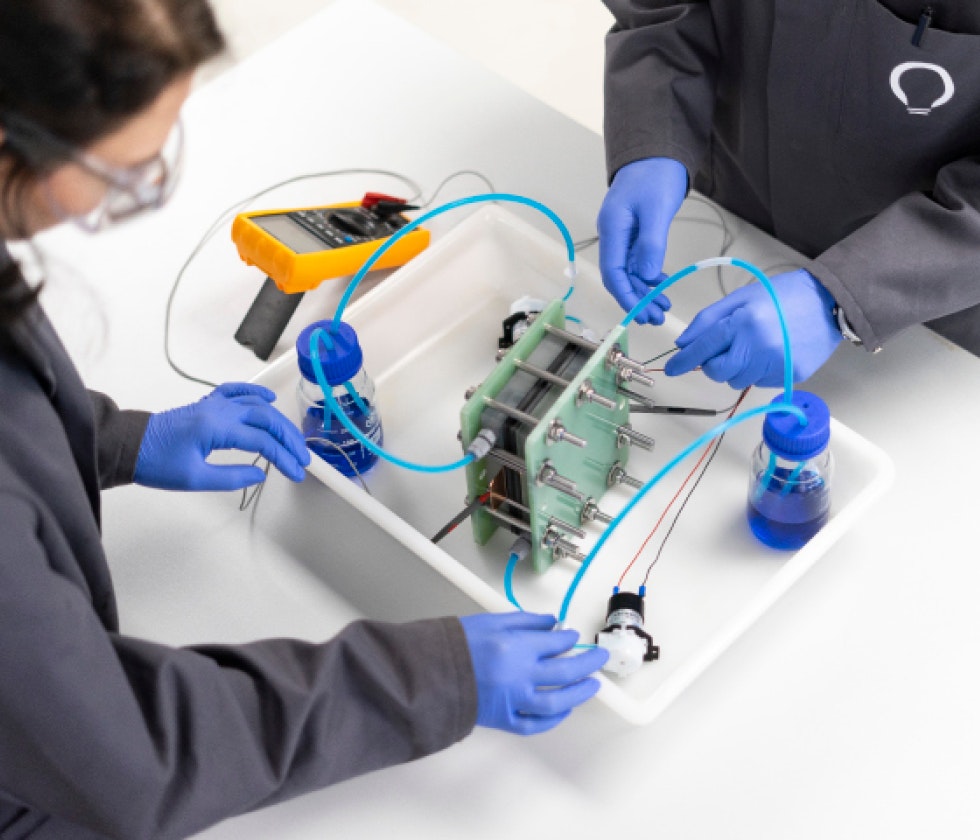A battery that doesn’t blow up, doesn’t use scarce rare earth metals, and can power your house for 20 years — is it possible? VoltStorage, a Munich-based startup, which just received €6m in VC funding, thinks it has the answer.
It is about the size of a small fridge and uses vanadium redox-flow technology to store energy, rather than the lithium-ion batteries that are used for powering laptops and electric cars. NASA is in fact exploring the same technology for future Mars missions, due to its long life, safety and affordability.
VoltStorage, however, is concentrating on applications closer to home, namely, the market for home energy storage, particularly for people wanting to store solar energy.
“Millions of houses now have solar panels on the roof, so it makes sense to have a battery that can really make use of the energy these generate,” says Michael Peither, cofounder and chief technology officer of VoltStorage.
VoltStorage, founded in 2016, is among a new wave of startups focused on energy storage, alongside Switzerland’s Energy Vault, a gravity and kinetic energy-based storage startup, which raised $110m from SoftBank last year.
The idea for home energy storage has been recently popularised by Tesla’s Powerwall batteries, but these are based on lithium-ion technology, which has a more limited lifecycle. Tesla’s Powerwall generally comes with a 10-year warranty, while VoltStorage’s redox-flow batteries are geared towards 20 years.
Peither began building his first redox-flow batteries in his parents’ basement, because his father wanted to find ways to store the energy from the family’s solar panels. At the time Peither was working electric cars for BMW, and had seen first-hand the teething problems with lithium-ion batteries.
“They were very expensive, and they do blow up,” he says. “I thought, there must be a better way to do this.”
The disadvantage of vanadium redox-flow batteries is that they are very heavy, and thus have tended to be used for very big energy storage projects. VoltStorage has, however, found a way to make the design relatively compact, and easy to install in the corner of the average home. VoltStorage has also developed an automated manufacturing process for the batteries — most other vanadium redox-flow batteries tend to be assembled manually as one-off projects.
This means the price for a battery is around €7,000, in the same ballpark as a Tesla Powerwall.

Lighter lithium-ion batteries make sense for portable and mobile uses like laptops and cars, says Peither, but, given that some of the materials used to make them — such as lithium and cobalt — are in short supply and often mined at great environmental cost, it makes sense to look for other types of batteries for bigger, stationary uses.
All the carmakers are scrambling to secure supplies of lithium-ion batteries, and even Elon Musk put out a plaintive call for miners to produce more nickel in a recent post-earnings call with investors.
In contrast, vanadium is the 20th most abundant element in the earth’s crust, and VoltStorage is also working on an iron redox-flow battery, which would have even easier-to-source materials (iron is the most abundant of the Earth’s metals). About half of the company’s 37-strong team work on R&D like this.
Batteries like these could be easily manufactured and sourced entirely in Europe, Peither points out.
“People are always discussing increasing battery production in Europe, but the fact is we don’t have the raw materials here for lithium-ion batteries. Those come from China, South America and Africa,” he says.
If Europe is really to become a powerhouse in the battery field, it will have to look to some of the alternative chemistries like this.



